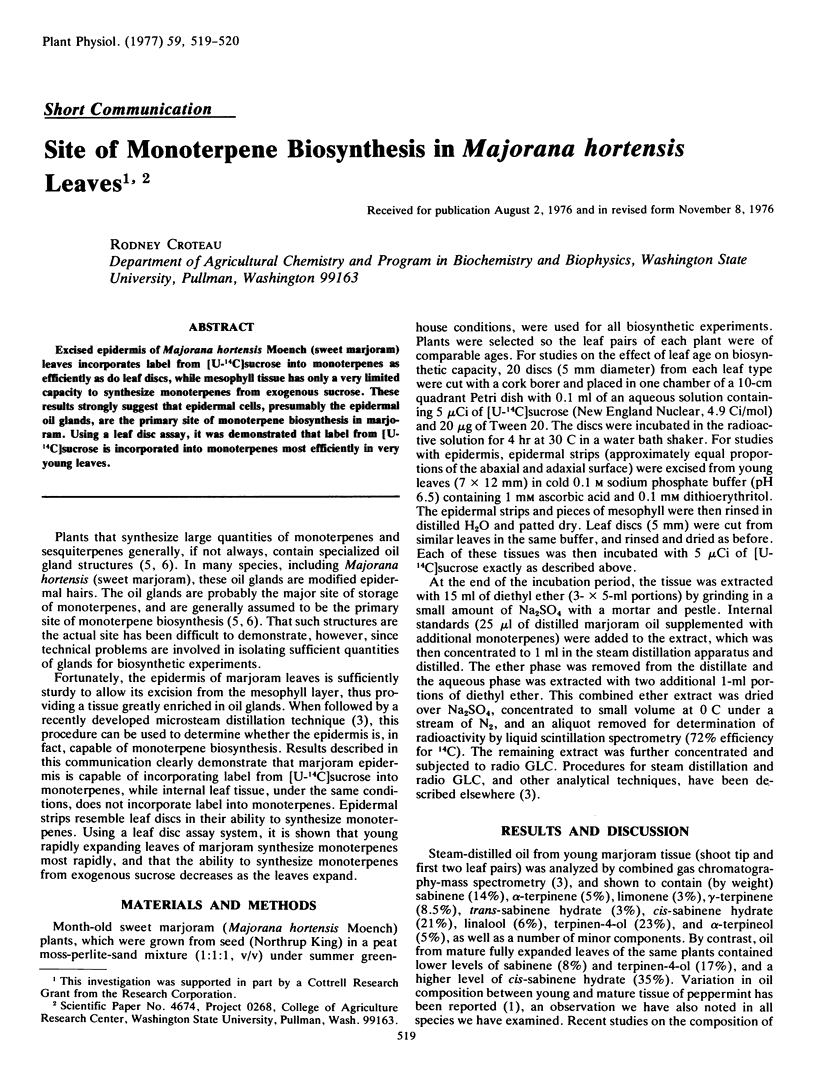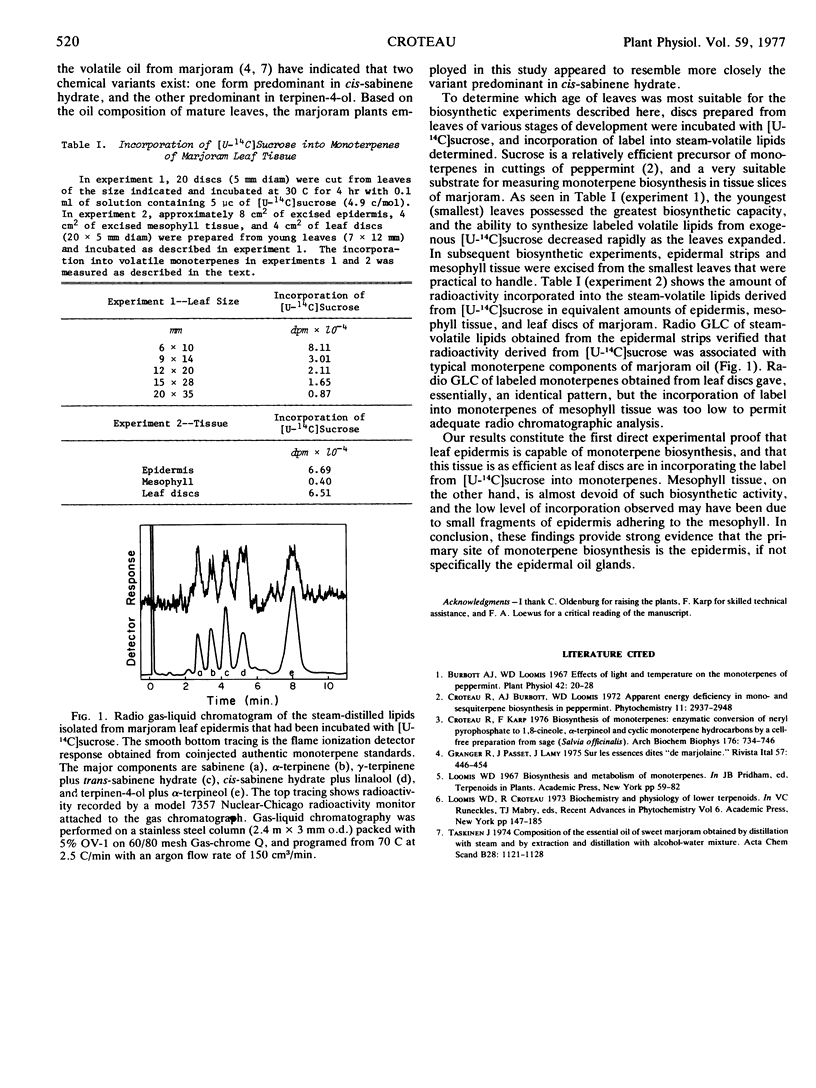Abstract
Excised epidermis of Majorana hortensis Moench (sweet marjoram) leaves incorporates label from [U-14C]sucrose into monoterpenes as efficiently as do leaf discs, while mesophyll tissue has only a very limited capacity to synthesize monoterpenes from exogenous sucrose. These results strongly suggest that epidermal cells, presumably the epidermal oil glands, are the primary site of monoterpene biosynthesis in marjoram. Using a leaf disc assay, it was demonstrated that label from [U-14C]sucrose is incorporated into monoterpenes most efficiently in very young leaves.
Full text
PDF

Selected References
These references are in PubMed. This may not be the complete list of references from this article.
- Burbott A. J., Loomis W. D. Effects of light and temperature on the monoterpenes of peppermint. Plant Physiol. 1967 Jan;42(1):20–28. doi: 10.1104/pp.42.1.20. [DOI] [PMC free article] [PubMed] [Google Scholar]
- Croteau R., Karp F. Biosynthesis of monoterpenes: enzymatic concersion of neryl pyrophosphate to 1,8-cineole, alpha-terpineol, and cyclic monoterpene hydrocarbons by a cell-free preparation from sage (Salvia officinalis). Arch Biochem Biophys. 1976 Oct;176(2):734–746. doi: 10.1016/0003-9861(76)90217-4. [DOI] [PubMed] [Google Scholar]


